

| Fairfax County, Virginia Analysis of Impediments 2016–2020 This analysis of impediments examines one of the wealthiest and most diverse counties in the nation. It contains the most thorough and detailed explanation yet of the Free Market Analysis™ that identifies what the racial and Hispanic of any race composition would be in a jurisdiction and its census tracts in a genuinely free housing market that is not distorted by housing discrimination. The recommendations to resolve impediments provide a pathway toward establishing a unitary housing market in which all races and ethnicities participate. Ending the phenomena that contribute to the relatively low proportions of African American households in 83 percent of the county’s census tracts would expand the housing choices of African American households that can afford to live in Fairfax County to include the county in their housing search. And it would enable the county’s efforts to get affordable housing built to be racially integrated. This AI also finds that the Commonwealth of Virginia, a Dillon state, poses impediments to fair housing choice. | 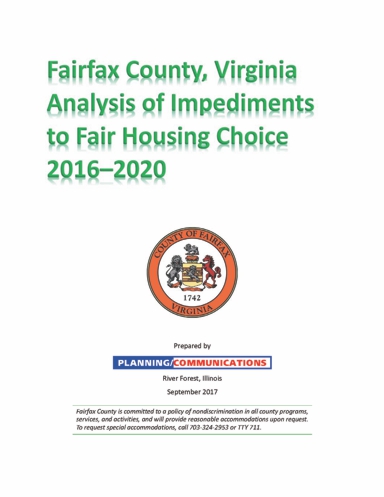 | ||
Free Market Analysis™ Taken to a Higher Level (Houston, TX) | 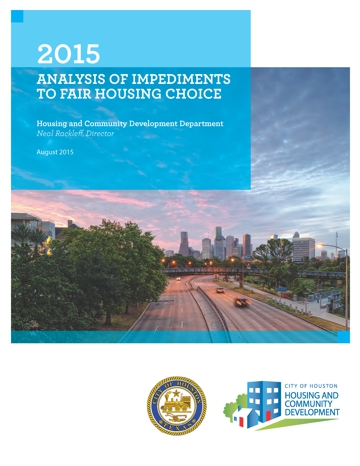 The full AI is available by clicking here. | ||
| “The Gold Standard of AIs.” See the thorough and innovative AI we conducted for Naperville, Illinois, in 2007. Click here to view or download the AI. Testimonials Best Practices Award 2009 from the Illinois Chapter of the American Planning Association Each of our subsequent AIs has improved upon the “gold standard” set by the 2007 Naperville AI. | 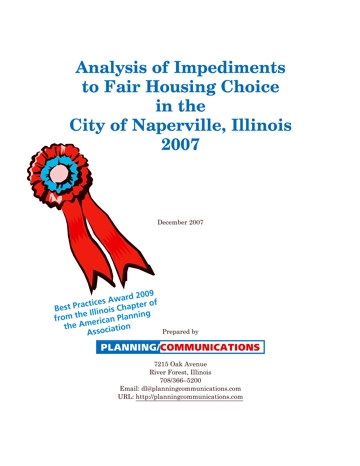 | Innovation in the AI Analysis The government of the District of Columbia has been doing more to affirmatively further fair housing than any jurisdiction we have heard of. The challenge the District faces is that its demographics require it to do much more. This new AI goes where no AI has gone before to incorporate affirmatively furthering fair housing into the city’s routine planning and zoning practices and to bring stable racial and economic integration to gentrifying neighborhoods. Click here to view or download the AI. | 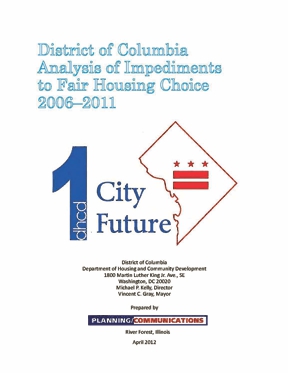 |
| Addressing Issues Rarely Faced The Lakewood, Ohio Analysis of Impediments to Fair Housing Choice 2011 addresses how a city can achieve stable racial integration in the midst of a very segregated metropolitan area. The substance of the Lakewood AI is very different than any other AI we have conducted due to Lakewood’s challenging situation in which the city is beginning to integrate racially while all around it is heavily segregated. Click here to view or download the AI. | 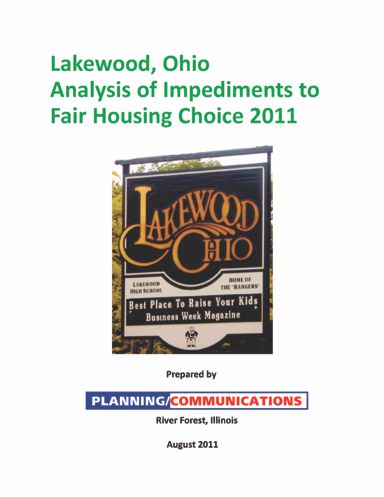 | Billings, Montana AI 2012: When Fair and Affordable Housing Meet Known for favoring diversity over separation and isolation, the City of Billings is in a rare position where it can prevent excessive levels of racial and economic concentrations from expanding and intensifying. This AI offers guidance for collaborating with the public schools and housing authority to achieve greater socio–economic diversity throughout the city. | 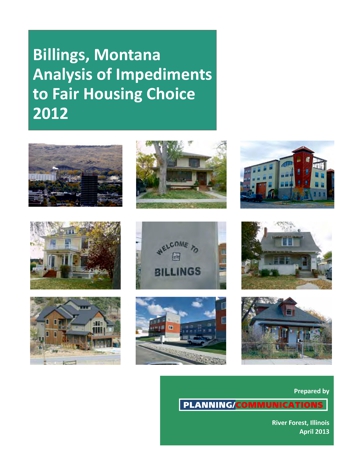 |
Further Advancing AI Innovation and Analysis: Murfreesboro, Tennessee AI 2010Murfreesboro is a “college town,” complete with the unique characteristics and issues that brings. For decades, the city’s comprehensive plan has sought to foster racial and economic integration. This AI provides a path to achieve both. | 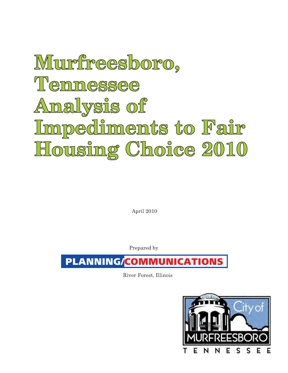 | Taking the Regional AI to a New Level The Clark County, Nevada Analysis of Impediments to Fair Housing Choice 2011 goes beyond our previous AIs to add a new layer of in–depth analysis applied to a county AI covering three cities (North Las Vegas, Boulder City, and Mesquite) plus unincorporated Clark County. The substance of the AI is very different than the other AIs due to the very different circumstances in Clark County, Nevada. Click here to to view or download the AI. | 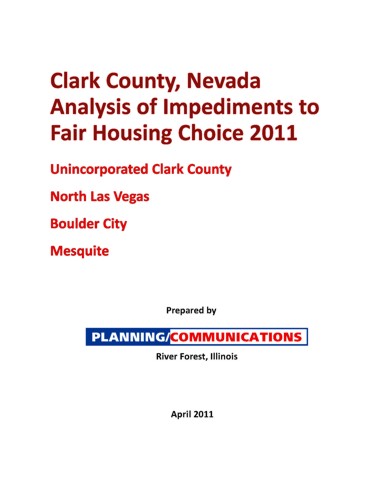 |
| The Best AI of All: Lake County – Waukegan – North Chicago 2012 Likely the very best AI that Planning/Communications conducted, it found pretty extensive racial and ethnic segregation in Lake County, Illinois and uncovered evidence of likely housing discrimination against Black residents in a number of Lake County towns. It innovatively incorporates into its Free Market Analysis™ data from the “Opportunity Index” advanced by the late, great John Lukehart, Tom Luce, and Jason Reece in The Segregation of Opportunities: The Structure of Advantage and Disadvantage in the Chicago Region — which added insight into the consequences of housing segregation in the county. It found that the proportion of African Americans in 80 percent of the county’s 51 towns was typical of hypersegregation. It found that Lake County households at the median income could not afford to buy a median–priced single-family detached house in 57 percent of the county’s towns. More than half of the county’s tenants were cost–burdened. The Lake County Director of Community Development refused to let the county’s plan commission or county board even see the AI and canceled the public hearing on the AI. Consequently, the Plan Commission and County Board never had an opporutnity to adopt the AI. HUD declined to allocate additional funds to the county to produce another AI to replace this one. Click here to view or download. | 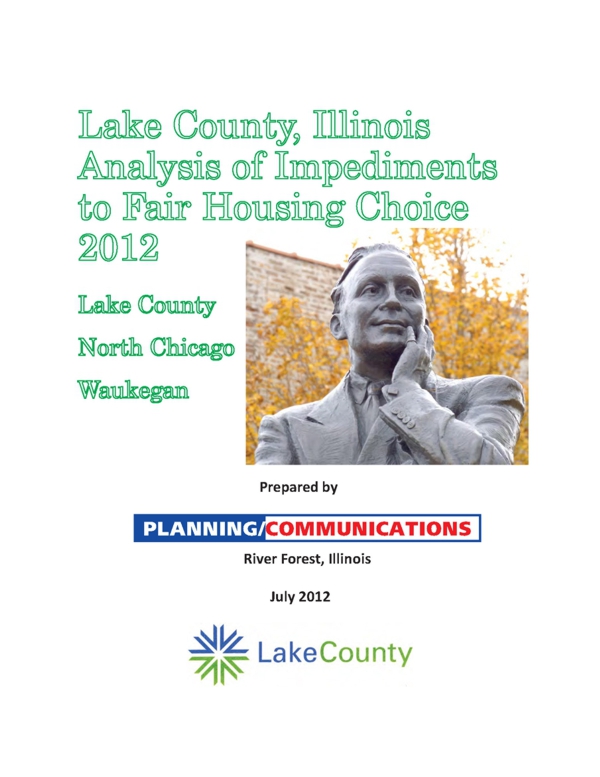 | ||

In all too many ways, it appears to be a conflict of interest for a CDBG recipient community to conduct an analysis of impediments itself. Try to imagine the impossible position city staff would face if asked to evaluate whether their own work — and the work of their superiors — posed an impediment to fair housing choice. In addition, few local government staff have the in–depth level of expertise on the fair housing issues needed to conduct an AI. To avoid this conflict of interest, prudent communities retain the services of an outside consultant to conduct their AIs.
We have worked with some jurisdictions that decided to conduct their analysis of impediments or assessment of fair housing in–house. We’ve tackled the parts of the AI in which their staff did not have the training to conduct themselves: Free Market Analysis™, analysis of land–use controls for possible exclusionary provisions, and analysis of zoning treatment of community residences for people with disabilities.
Planning/Communications can conduct a genuinely fair and balanced analysis of impediments that complies with the Westchester County Doctrine for your town, village, city, county, or state. While the demographics of every community are unique to that community, each of the AIs we have produced provides a good idea of the depth of research, readability, and extent of documentation we put into an AI. We do not produce a cut–and–paste AI. Although the physical structures of our AIs are similar and some explanatory information is similar (why reinvent the wheel?), the content of each AI we produce is singular for each jurisdiction studied. Each new AI we produce adds something new to the analysis as we constantly refine our techniques. For more information, please call Dan at 708/366–5200 (9 a.m. to 6 p.m. central time) or send us an email.
A bit more about Analyses of Impediments
Throughout the nation, HUD interprets these broad objectives to mean:
The “Westchester County Doctrine” emerges from the federal district court decisions and August 10, 2009 settlement in the False Claims Act lawsuit against Westchester County, NY, in which the county falsely certified that it used $30 million in Community Development Block Grant funds to “affirmatively further fair housing” — which every CDBG recipient is obligated to do when it accepts CDBG monies. The county has agreed to pay $62.5 million, develop at least 750 housing units in the most residentially segregated white municipalities in the county, and institute meaningful housing desegregation policies. The settlement has had an major impact on the way federal housing and community development funds are used throughout the country. We urge you to visit http://antibiaslaw.com to get the full details of the settlement, download the settlement agreement and the important court decisions (especially judge Denise Cote’s seminal February 24, 2009 decision).
The AIs we conduct anticipated and comply with the standards established by Judge Cote’s decision and the settlement. This reflects our in–depth understanding of the issues that AIs are supposed to address.
Learn more about what AIs are supposed to cover in chapter 2 of the District of Columbia AI.